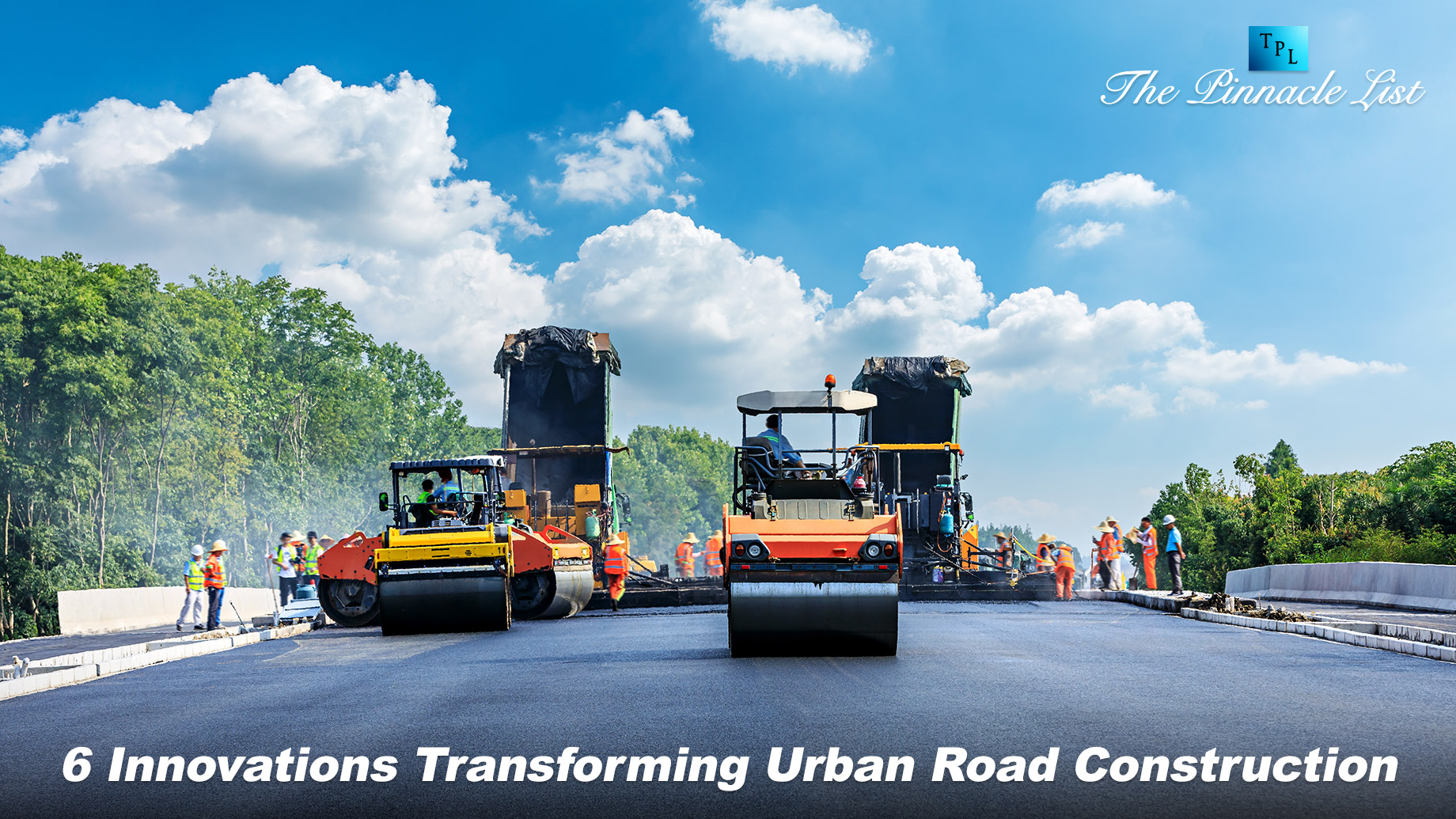
The landscape of urban road construction is shifting fast, with cities worldwide embracing innovative technologies and sustainable practices. These are deemed essential to cater to the rise in the demand for urbanization and urban infrastructure by bettering the resilience of the infrastructure created and reducing the pressure on the environment.
In this article, we will explore six of the most significant innovations revolutionizing urban road construction and share some ways they’re making a difference in cities.
1. Asphalt Mixes and Sustainability
Road construction has always been energy-intensive and a significant source of greenhouse gas emissions. Asphalt production, traditionally a gargantuan energy-consuming and GHG-emitting portion of urban road construction, is today an old way of doing things. These have been replaced with eco-friendly asphalt mixes with high performance and significantly reduced environmental impacts.
One of them is warm-mix asphalt. Unlike traditional hot-mixed asphalt, which has to be heated very hot before it is laid, warm-mixed asphalt is manufactured at considerably lower temperatures. Lower temperatures reduce energy use by up to 30%, saving greenhouse gases by a similar percentage.
Other additional benefits of warm-mix asphalt, besides its environmental effects, include its workability, making it easier to compact and haul longer distances.
That said, Portland asphalt paving firms have already started using such green materials in their projects, which is a step in line with the city’s efforts in making carbon reduction and green infrastructure policies.
This is equally, if not only friendly to the environment but also adds to the longevity of the roads, leading to decreased maintenance expenses and less bother for the residents in the urban cities.
2. Perpetual Pavements
Historically, it was well understood that roads developed with earlier construction methods usually required significant repair after a maximum of a few decades. Perpetual pavements are changing this trend. They now have a design life of about 50 years with minimal maintenance. Beyond that, they’re a critical development in urban areas, where many roadworks cause significant disruption.
These perpetual pavement structures are multi-layered. The bottom layer is stiff enough to take high-stress loads without cracking and provides a robust and stable foundation. However, the upper layers are constructed to allow easy resurfacing. If the surface layer exhibits defects, it’s quick and easy to replace without disturbing the lower layers.
3. Smart Traffic Management Systems
As congestion rates from urbanization continue to rise, one of the foremost challenges is facilitating the human flow in and out of roads during construction. Smart traffic control systems are the newest innovations in this regard. They help to monitor and control real-time data regarding traffic flow, increasing safety at any road construction site, which can promote safety for both the site workers and drivers.
Furthermore, these systems can interface with other smart city technologies, like connected vehicles and autonomous systems, to increase traffic management. This improves the efficiency of roads constructed and contributes to the overall safety and liveability of urban areas.
4. Recycled Materials in Road Construction
An even more innovative approach during road construction is using recycled materials. This would solve environmental and economic problems to a greater extent.
Most current road designs are too dependent on virgin products like aggregates and bitumen, which are costly and environmentally dangerous in their production processes. By using recycled materials, less dependence will be placed on them, and waste can be minimized in the construction industry.
One of the most common materials used in such processing is recycled asphalt pavement, also known as RAP. RAP is a resultant material when the existing asphalt in aged pavements is milled and reprocessed. This material can be mixed with new asphalt to create a strong road surface. In addition to RAP helping to save virgin materials, other waste materials adopted in asphalt mixes include rubber from old tires and plastic waste.
5. Water-Permeable Pavements
Urban areas should offer stormwater management because the impervious surfaces in cities tend to get flooded. The solution uses water-permeable or porous pavements, allowing free water passage into the ground.
The design of these pavements incorporates a permeable wearing course that allows rainwater through to the underlying layers and then stores it, gradually releasing it into the ground. This can delay surface runoffs and, therefore, reduce the possibility of floods.
At the same time, it cleans the rainwater to some extent as it goes through these surfaces and underlying layers before reaching into the soil, making urban water bodies less polluted.
6. Full-Depth Reclamation (FDR)
This sustainable road construction technique recycles existing asphalt pavements and base materials to create a new, stabilized road base. It’s a cost-effective, non-polluting method that dramatically reduces the need for new materials and waste.
FDR involves crushing existing road material and mixing the fragments with a stabilizing agent, such as cement or asphalt emulsion, before compacting. Then, a new asphalt surface can be laid on top of it, giving the road new life.
Furthermore, FDR provides the most significant benefits in urban areas, where total roadway removal and replacement would otherwise be seriously disruptive. By recycling existing materials on-site, FDR reduces the waste generated and the need to transport new materials. This makes the overall project less expensive and exceptionally environmentally friendly.
Conclusion
In light of urban centers’ rapid expansion and transformation, initiating such breakthroughs into urban pavement building is essential.
By being at the forefront of adopting these innovative methods, cities stand a better chance to prepare their vital services for future challenges while reducing adverse environmental effects and improving their inhabitants’ standards of living.